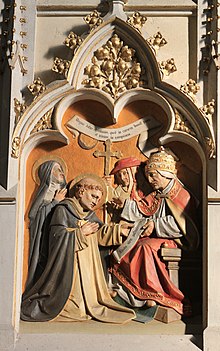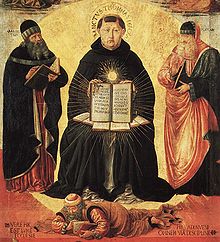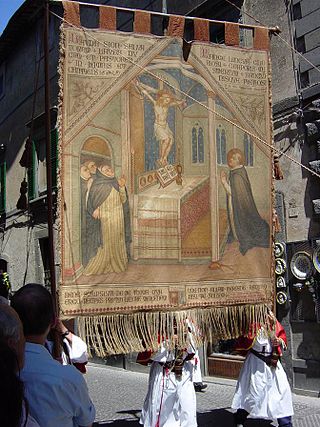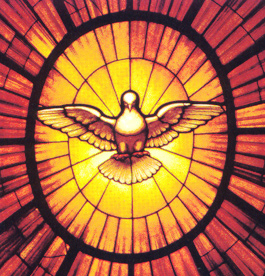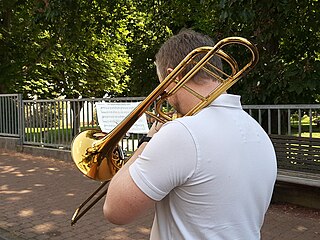- Lauda Sion Salvatórem
- Lauda ducem et pastórem
- In hymnis et cánticis.
- Quantum potes, tantum aude:
- Quia major omni laude,
- Nec laudáre súfficis.
- Laudis thema speciális,
- Panis vivus et vitális,
- Hódie propónitur.
- Quem in sacræ mensa cœnæ,
- Turbæ fratrum duodénæ
- Datum non ambígitur.
- Sit laus plena, sit sonóra,
- Sit jucúnda, sit decóra
- Mentis jubilátio.
- Dies enim solémnis ágitur,
- In qua mensæ prima recólitur
- Hujus institútio.
- In hac mensa novi Regis,
- Novum Pascha novæ legis,
- Phase vetus términat.
- Vetustátem nóvitas,
- Umbram fugat véritas,
- Noctem lux elíminat.
- Quod in cœna Christus gessit,
- Faciéndum hoc expréssit
- In sui memóriam.
- Docti sacris institútis,
- Panem, vinum, in salútis
- Consecrámus hóstiam.
- Dogma datur Christiánis,
- Quod in carnem transit panis,
- Et vinum in sánguinem.
- Quod non capis, quod non vides,
- Animósa firmat fides,
- Præter rerum ordinem.
- Sub divérsis speciébus,
- Signis tantum, et non rebus,
- Latent res exímiæ.
- Caro cibus, sanguis potus:
- Manet tamen Christus totus,
- Sub utráque spécie.
- A suménte non concísus,
- Non confráctus, non divísus:
- Integer accípitur.
- Sumit unus, sumunt mille:
- Quantum isti, tantum ille:
- Nec sumptus consúmitur.
- Sumunt boni, sumunt mali:
- Sorte tamen inæquáli,
- Vitæ vel intéritus.
- Mors est malis, vita bonis:
- Vide paris sumptiónis
- Quam sit dispar éxitus.
- Fracto demum Sacraménto,
- Ne vacílles, sed memento,
- Tantum esse sub fragménto,
- Quantum toto tégitur.
- Nulla rei fit scissúra:
- Signi tantum fit fractúra:
- Qua nec status nec statúra
- Signáti minúitur.
- Ecce panis Angelórum,
- Factus cibus viatórum:
- Vere panis filiórum,
- Non mitténdus cánibus.
- In figúris præsignátur,
- Cum Isaac immolátur:
- Agnus paschæ deputátur
- Datur manna pátribus.
- Bone pastor, panis vere,
- Jesu, nostri miserére:
- Tu nos pasce, nos tuére:
- Tu nos bona fac vidére
- In terra vivéntium.
- Tu, qui cuncta scis et vales:
- Qui nos pascis hic mortáles:
- Tuos ibi commensáles,
- Cohærédes et sodáles,
- Fac sanctórum cívium.
- Amen. Allelúja.
| - Sion, lift up thy voice and sing:
- Praise thy Savior and thy King,
- Praise with hymns thy shepherd true.
- All thou canst, do thou endeavour:
- Yet thy praise can equal never
- Such as merits thy great King.
- See today before us laid
- The living and life-giving Bread,
- Theme for praise and joy profound.
- The same which at the sacred board
- Was, by our incarnate Lord,
- Giv'n to His Apostles round.
- Let the praise be loud and high:
- Sweet and tranquil be the joy
- Felt today in every breast.
- On this festival divine
- Which records the origin
- Of the glorious Eucharist.
- On this table of the King,
- Our new Paschal offering
- Brings to end the olden rite.
- Here, for empty shadows fled,
- Is reality instead,
- Here, instead of darkness, light.
- His own act, at supper seated
- Christ ordain'd to be repeated
- In His memory divine;
- Wherefore now, with adoration,
- We, the host of our salvation,
- Consecrate from bread and wine.
- Hear, what holy Church maintaineth,
- That the bread its substance changeth
- Into Flesh, the wine to Blood.
- Doth it pass thy comprehending?
- Faith, the law of sight transcending
- Leaps to things not understood.
- Here beneath these signs are hidden
- Priceless things, to sense forbidden,
- Signs, not things, are all we see.
- Flesh from bread, and Blood from wine,
- Yet is Christ in either sign,
- All entire, confessed to be.
- They, who of Him here partake,
- Sever not, nor rend, nor break:
- But, entire, their Lord receive.
- Whether one or thousands eat:
- All receive the self-same meat:
- Nor the less for others leave.
- Both the wicked and the good
- Eat of this celestial Food:
- But with ends how opposite!
- Here 't is life: and there 't is death:
- The same, yet issuing to each
- In a difference infinite.
- Nor a single doubt retain,
- When they break the Host in twain,
- But that in each part remains
- What was in the whole before.
- Since the simple sign alone
- Suffers change in state or form:
- The signified remaining one
- And the same for evermore.
- Behold the Bread of Angels,
- For us pilgrims food, and token
- Of the promise by Christ spoken,
- Children's meat, to dogs denied.
- Shewn in Isaac's dedication,
- In the manna's preparation:
- In the Paschal immolation,
- In old types pre-signified.
- Jesu, shepherd of the sheep:
- Thou thy flock in safety keep,
- Living bread, thy life supply:
- Strengthen us, or else we die,
- Fill us with celestial grace.
- Thou, who feedest us below:
- Source of all we have or know:
- Grant that with Thy Saints above,
- Sitting at the feast of love,
- We may see Thee face to face.
- Amen. Alleluia.
|
